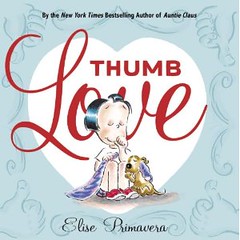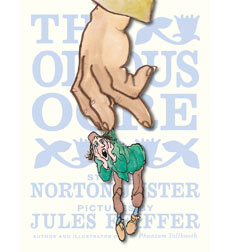
Flotsam is a beautifully illustrated picture book by David Wiesner. I was a little apprehensive about reading this book. I knew Professor Neely had mentioned it in class as a Caldecott Award Winner and it was also noted in our text book, so I figured I should probably take a look at it. The reason I was apprehensive about reading this book was because it has no words. What kind of book doesn't have words? I now have the answer: Flotsam.

Flotsam begins with a young boy examining some typical land animals you would find at the beach. While playing with a crab, a huge wave comes and knocks the young boy over. When the waves recede, the young boy notices an antique camera lying on the sand. It is a Melville underwater camera. The boy brings the camera to his parents and then to the life guard, but no one knows to whom it belongs. The young boy takes out the film and runs it over to the One-Hour Photo shop to develop the pictures. And he waits, and waits, and waits. Finally he gets the pictures and runs back to the beach. The young boy is amazed by what he sees in the photographs. There is a toy fish swimming in the ocean with real fish that look exactly alike. There is a mother octopus reading a book to baby octopi and some fish while sitting on a chair in the ocean. There are sea turtles with tiny villages on their backs, aliens underwater next to sea horses, and giant star fish with islands on their backs. The most intriguing photo is of a girl holding a picture of a boy holding a picture of a girl holding a picture of more people holding more pictures. Being the smart boy that he is, the young boy grabs his microscope to use the different magnifications to see all the way to the end: a black and white photo of a boy dressed in early-1900s clothing on the beach. The boy decides then to take a picture of himself holding the continuous photograph, but falls short of completing this task when a large wave comes up to splash him from behind and scatter all the photographs. The young boy then decides to throw the camera back into the ocean. The camera travels, with the help of the sea creatures, to another beach where a little girl finds it.

As you can see from my summary, Flotsam tells a wonderful story without using any words at all. I am thoroughly impressed with Wiesner's ability to create a fluid and intriguing story by just using pictures. Wiesner varies between double-page illustrations and smaller illustrations combined on one page, similar to that of a comic book. When Wiesner wants to tell the reader of the action the young boy is taking, he puts a sequence of illustrations together to show the action on one page. For example, the reader can see the boy going to the photography shop and waiting for the pictures all on one page as opposed to dragging that scene out page, by page, by page. Wiesner also puts the illustrations of the photographs from the underwater camera on a black background so the reader knows that these are different from the other illustrations in the story. The size, length, and shape of the illustration boxes are all different which keeps the reader engaged.
The illustrations are done in a style that makes them very realistic, even though the illustrations are of some nonrealistic scenarios. The illustrations make you believe that these ridiculous scenarios of giant star fish walking around with islands on their back are actually real.
What a beautiful and imaginative book this is for all ages!

If you are looking for a picture book with no words, this is your book. If you are looking for something that takes your breath away, this is your book. If you are looking for something that makes you say "whoa" approximately ten times throughout the course of reading, this is your book. I cannot recommend this book highly enough!
Happy Reading!
Heather
 meless man again, the little girl slips out of her mothers grip and give the homeless man her tooth so he can get the tooth fairy money.
meless man again, the little girl slips out of her mothers grip and give the homeless man her tooth so he can get the tooth fairy money.






















